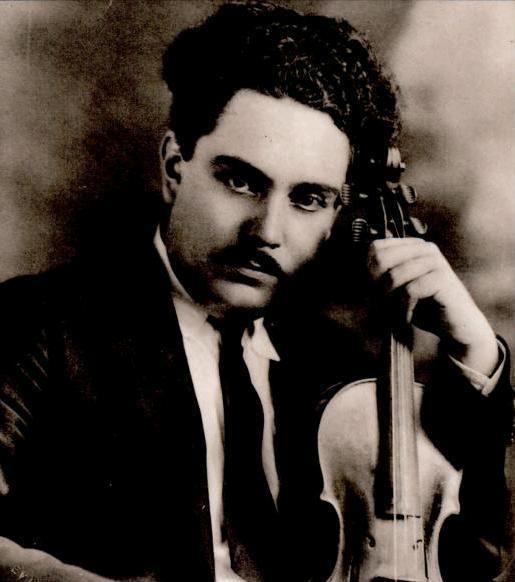 | ||
Planos (Planes) is a chamber-music composition by the Mexican composer Silvestre Revueltas, also slightly enlarged and scored for full orchestra and published under its alternate title, Danza geométrica (Geometric Dance). Both versions were composed in 1934, and the scores are both dedicated to the architect Ricardo Ortega.
Contents
History
From at least as early as 1926, the architect Ricardo Ortega had encouraged Revueltas to take his composing more seriously, and showed some of his early scores to Edgard Varèse. When, in 1934, Revueltas composed Planos with a structure clearly alluding to architectural models, he dedicated the score to his architect friend. Although Revueltas is often regarded as a Mexican nationalist with strong populist leanings, Planos contains no obvious reference to folklore. It is one of his purest musical works, in which the use of any folk-like musical elements is almost imperceptible (Sánchez-Gutierrez 1996, 7, 48). His references to geometry, though more programmatic than Varèse's, nevertheless indicate a kinship with the older composer's work in a shared overall linear character. Revueltas was certainly aware of Varèse's music and aesthetics in the 1920s, when the two composers had exchanged correspondence (Sánchez-Gutierrez 1996, 14, 29–30).
The chamber-music version was completed in March 1934, and was reorchestrated in June of the same year for full orchestra (Slonimsky 1945, 250).
Revueltas described the work as
functional architecture, which does not exclude sentiment. Melodic fragments derive from the same impulse, the same emotion as my other works; they sing in persistent rhythms, ever in motion; they produce sonorities that may seem strange because they are not common. My rhythms and sonorities are reminiscent of other rhythms and sonorities, just as building material in architecture is identical with any building material, but it serves for constructions that are different in meaning, form, and expression. (Revueltas 1989, 212–13, translated in Slonimsky 1945, 248)
Instrumentation
The chamber version, published as Planos, is scored for a nonet: B♭ clarinet, B♭ bass clarinet, bassoon, C trumpet, piano, 2 violins, cello, and double bass. This heterogenous scoring, reminiscent of provincial bands, resembles those of other Revueltas scores, such as Alcancías and Colorines (both from 1932), Toccata sin Fuga (1933), and the slightly later Homenaje a Federico García Lorca (Sánchez-Gutierrez 1996, 37–38).
The large-orchestra version, published as Danza geométrica, is scored for piccolo, 2 flutes, 2 E♭ clarinets, 2 B♭ clarinets, B♭ bass clarinet, 3 bassoons (3rd doubling contrabassoon), 4 horns, 4 trumpets, 3 trombones, tuba, percussion (4 players: xylophone, glockenspiel, large and small tamtams, bass drum, slapstick, cymbal, large gong, tambourine, and tubular bells), 2 pianos, and strings. The larger ensemble seems to have required a temporal expansion as well. Two sections in the first half are extended and rewritten with newly added melodic material, the return of the opening material at the end is recast, and occasional motivic repetitions are added throughout (Archibald 1966).
Analysis
Planos departs from the ternary A–B–A form Revueltas habitually employed in single-movement works. Instead, it is freely structured and through-composed (Hernández 2009, 80). It is constructed in modular, mosaic fashion from six generating motives, each with several variant forms. These motives are manipulated and juxtaposed, resulting in their continual re-contextualization (Sánchez-Gutierrez 1996, 29, 33–34, 122–24). The identity of each of these motivic groups is intensified by the use of particular timbres, intensities, articulations, registers, melodic contours, meters, rhythmic patterns, and durations. Revueltas combines them into a whole through the use of sequencing, double and triple superimposition, stretto, fragmentation, extension, and shadowing, united by a complex design of ostinatos and rhythmic planes. The resulting musical discourse is often both flowing and abrupt, "a faithful mirror of the daily battle within the conflicting imagery of his inner and outer worlds" (Kolb Neuhaus 1998).
When the influence of Igor Stravinsky on the orchestral version was suggested, the composer reacted:
It was performed last year. Opinion was divided. Some thought that it was Stravinsky; who knows what Stravinsky would have thought. Because it uses two pianos and some gongs, the chords at the beginning and end recall the sonority of the final chords of Les noces by Stravinsky; however, they are neither the same notes nor the same intervals, which probably bestows upon them an even stronger resemblance. (Revueltas 1989, 212)
